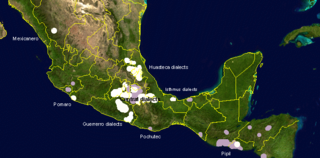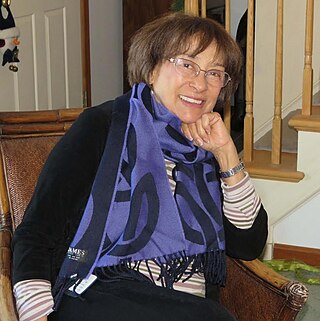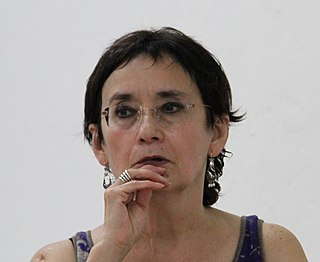John Mraz (California, 1943) is a pioneer in the representation of history in modern media (photography, cinema, video, digitalization).
John Mraz (California, 1943) is a pioneer in the representation of history in modern media (photography, cinema, video, digitalization).
Mraz has written books and articles that do history of and through photography. He has directed documentary films, videotapes and digital productions about historical subjects, and has analyzed the portrayal of history in feature films. He has also been curator of major historical photographic exhibits. Mraz received a Ph.D. in History from the University of California, Santa Cruz (1986).[ citation needed ]
He moved to Mexico in 1981, and is a research professor in the Institute of Social Sciences and Humanities at the University of Puebla (Mexico). He has been named National Researcher Emeritus by the Secretary of Public Education. He has been a visiting professor and research fellow in Princeton, Oxford, Dartmouth College, Barcelona, Rio de Janeiro, Tokyo, Auckland, the Harry Ransom Center of U. Texas, the National Autonomous University of Mexico, and other institutions.[ citation needed ]
Historian Paul Vanderwood asserted, “John Mraz is considered one of the history profession’s most astute students of visual culture”. [1]
Mraz’s books have focused largely on analyzing photographs taken in Mexico, and historian Jurgen Buchenau wrote that he is “widely considered the preeminent expert on the history of Mexican photography". [2]
Historian John Lear attested to his pioneering status: “John Mraz began studying the modern visual culture of Latin America back when few historians took the field seriously”. [3] His first monograph, Nacho López, was said to “answer virtually all of the obvious (but difficult) questions that usually go not only frustratingly unanswered but unasked in photographic histories". [4] Ignacio Sánchez Prado argued that Mraz’s book, Looking for Mexico: Modern Visual Culture and National Identity, “Is without doubt the best introduction available on Mexican visual studies, and the necessary point of departure for any readers seeking to familiarize themselves with the body of work on that subject as it exists”. [5] That book was described by Rubén Gallo, Director of Latin American Studies at Princeton University, as “the definitive history of Mexican photography...brilliantly researched, passionately argued, and beautifully written;” on the back cover of another book by Mraz, Gallo affirmed “John Mraz is undoubtedly the world expert on Mexican photography”. [6]
Mraz’s work in documentary productions has received scholarly awards and recognition. Made on Rails was given the Hubert B. Herring Award for "Best Videotape, Film or Non-Print Media," by the Pacific Coast Council on Latin American Studies (1988). It was shown at a session of the American Historical Association convention in 1987 that was dedicated to Mraz’s method of videohistory. Both Made on Rails and Innovating Nicaragua were awarded the Latin American Studies Association "Award of Merit in Film" for "excellence in the visual presentation of educational and artistic materials on Latin America." One reviewer said of the productions on Nicaragua and the Mexican railroad workers, “Historians can learn a lot from these films, and they can be viewed with admiration for a colleague who with little budget but with much ingenuity is ‘writing’ history through a medium which is generally appreciated but less well understood”. [7]
Mraz has curated a number of photographic exhibits, but four of them stand out
Nacho López: To have something to say/Nacho López: Tener algo que decir, Digital Exhibit, Memórica: México, haz memoria, 2023. https://memoricamexico.gob.mx/es/memorica/nacho-lopez-ENG.
Books
Director of 11 films and 20 audiovisual productions on Latin American history. Two films have received international awards. The films are distributed in the United States, Europe, and Latin America in Spanish, English, French and Catalan.
Productions (selective listing):.
Presented (selective listing): X Festival Internacional del Nuevo Cine Latinoamericano, La Habana, 1988. Annual Congress of the American Historical Association, 1987.
Director, Innovating Nicaragua/Nicaragua innovando, Managua and Puebla: Ministerio del Interior and UAP, 1986/87. Distribution: U.S. and Canada—The Cinema Guild (New York). Latin America—Zafra/Latino Video (Mexico City). Europe—La Médiathèque des Trois Mondes (Paris).
Award: Latin American Studies Association "Award of Merit in Film" for “excellence in the visual presentation of educational and artistic materials on Latin America,” Latin American Studies Association Invitational Film Festival, 1986. Present ed (selective listing): VIII Festival Internacional del Nuevo Cine Latinoamericano, La Habana, 1986. "Screening Days for Films from Latin America, the Caribbean, Africa, Asia, and the Pacific", Stockholm, 1987.

Universidad de las Américas Puebla, commonly known as UDLAP, is a Mexican private university located in San Andrés Cholula, near Puebla. The university is known for its programs in Finance, Arts and Humanities, Social sciences, Science and Engineering, and Business and Economics. It is considered to be one of the most prestigious universities in Latin America, having been ranked the best private and single-campus university in Mexico by the newspaper El Universal, as well as being one of the only seven universities in Latin America accredited by the Southern Association of Colleges and Schools. The UDLAP has also been very successful in Mexican collegiate sports; their teams are the Aztecas.

The Nahuan or Aztecan languages are those languages of the Uto-Aztecan language family that have undergone a sound change, known as Whorf's law, that changed an original *t to before *a. Subsequently, some Nahuan languages have changed this to or back to, but it can still be seen that the language went through a stage. The best known Nahuan language is Nahuatl. Nahuatl is spoken by about 1.7 million Nahua peoples.

Arnold Belkin was a Canadian-Mexican painter credited for continuing the Mexican muralism tradition at a time when many Mexican painters were shifting away from it. Born and raised in western Canada, he trained as an artist there but was not drawn to traditional Canadian art. Instead he was inspired by images of Diego Rivera's work in a magazine to move to Mexico when he was only eighteen. He studied further in Mexico, focusing his education and his career mostly on murals, creating a type of work he called a "portable mural" as a way to adapt it to new architectural style. He also had a successful career creating canvas works as well with several notable series of paintings. He spent most of his life and career in Mexico except for a stay in New York City in the late 1960s to mid-1970s. His best known works are the murals he created for the University Autónoma Metropolitana in the Iztapalapa borough of Mexico City.

The Benemérita Universidad Autónoma de Puebla (BUAP) is the oldest and largest university in Puebla, Mexico. Founded on 15 April 1578 as Colegio del Espíritu Santo, the school was sponsored by the Society of Jesus during most of the Spanish colonial era before turning into a public college in 1825 and eventually into a public university in 1937. The religious origins can be seen in many of BUAP's buildings in Puebla city centre, which were once colonial-era churches.

Club de Fútbol Lobos de la Benemérita Universidad Autónoma de Puebla were a Mexican football club based in Puebla, Mexico. The club represented the Benemérita Universidad Autónoma de Puebla. The club's history goes back to the early 1930s when it was known as Preparatoria, formed exclusively by players who attended the university. The club has played on and off since then. It was not until the 1990s when the club made a serious comeback after playing in the lower levels of Mexican football. In 2003, the club was awarded a spot in the Primera A, where the club played until promotion in 2017 to Liga MX. The club marked its home in the Estadio Universitario BUAP.
Ramón Sagredo (1834–1870) was a 19th-century Mexican painter and photographer who worked under the patronage of Emperor Maximilian and decorated the former cupola of "La Profesa" with the Catalan master Pelegrí Clavé.
Gregorio Selser was an Argentine journalist and historian. He published an extensive bibliography critical of globalization, imperialism, and covert operations implemented by the CIA in Latin America, in particular.

Various types of visual arts developed in the geographical area now known as Mexico. The development of these arts roughly follows the history of Mexico, divided into the prehispanic Mesoamerican era, the colonial period, with the period after Mexican War of Independence, the development Mexican national identity through art in the nineteenth century, and the florescence of modern Mexican art after the Mexican Revolution (1910-1920).
Nacho López was an important figure in the photojournalism of Mexico in the 20th century. Unlike the current of the time, he mostly rejected the creation of images that made Mexico exotic and preferred the photographing of the common people of Mexico City over that of the country's political and social elite. He is credited for being the first in Mexico to work on photographic series, which he called “photo-essays” meant for publication in weekly pictorial magazines in the country. About half of his photographs were events staged by López designed to capture the reactions of bystanders. Although he was an active photojournalist for less than a decade in the 1950s, he was influential to the generations of photojournalists that followed him, with a collection of about 33,000 images now at the federal photograph archive in Pachuca, Hidalgo.

Asunción Lavrin is a historian and author with more than 100 publications on topics of gender and women's studies in colonial and twentieth century Latin America and religion and spirituality in Colonial Mexico. She is professor emerita at Arizona State University. Lavrin is the daughter-in-law of the artist Nora Fry Lavrin. She has two children, Cecilia and Andy, and two grand children, Erik and Nora.

Julio Carrasco Bretón is a Mexican artist mostly dedicated to murals and canvas work. He invented a technique for creating murals which allows him to create panels in his workshop, and then stack them for transport to the assembly site. His educational background is in science and philosophy as well as art and the themes in his work, especially murals often reflect these themes. In addition to creating art, he has been active in cultural, artistic and copyright issues, involved in the founding of a number of organizations and involved in others additionally.
Alicia Girón González is the past president of the International Association for Feminist Economics (IAFFE), her tenure was 2014 to 2015. Girón has also served as director of Universidad Nacional Autónoma de México's (UNAM) Economic Research Institute (IIEc).
Enrique Marroquín is a Mexican liberal Catholic priest, writer and scholar, considered to be one of the key figures of the Mexican counterculture movement of La Onda and a strong supporter of the Liberation theology movement.

Julia Tuñón Pablos is a Mexican historian and author. In 1987, she wrote the first comprehensive historical account of women's contributions to building the nation, as prior histories had predominantly left women out of the narrative. In 1983 and again in 2000 she was awarded the Gabino Barreda Medal for academic excellence She won the Susana San Juan Literary Prize in 1998 and was awarded the Emilio García Riera Medal by the University of Guadalajara in 2004.
Preguntarnos por la participación femenina en la historia de México, implica la conciencia de múltiples desconocimientos.
Daniel Cazés Menache was a Mexican anthropologist and gender studies scholar.

Ileana Rodríguez is Distinguished Professor Emeritus in Latin American Literatures and Cultures at the Ohio State University, and she is also affiliated with the Instituto de Historia de Nicaragua y Centroamérica (IHNCA).
El sátiro is a 1980 Mexican comedy film directed by Raúl Zenteno and starring Mauricio Garcés, Patricia Rivera, and Alberto Rojas.
Victoria Cabezas Green, is an American photographer, conceptual artist and multimedia artist who has developed her production in Costa Rica.

María Teresa Rojas Rabiela is an ethnologist, ethnohistorian, Emeritus National Researcher and Mexican academic, specializing in Chinampas of Mexico's Basin, history of agriculture, hydraulics, technology, and labor organization in Mesoamerica during pre-Columbian and colonial eras, as well as historical photography of Mexico's peasants and indigenous people. She is recognized as a pioneer in historical studies on earthquakes in Mexico. From 2018 to 2021, Rojas Rabiela was involved in the restoration of the section of the pre-Hispanic aqueduct of Tetzcotzinco, Texcoco, known as El caño quebrado.
Montserrat Galí Boadella was a Mexican art historian. She was trained in philosophy, literature, and art history at universities in Barcelona and Zagreb, as well as at the National Autonomous University of Mexico (UNAM), where she obtained her doctorate. Her work focused on investigating the relationship between art and society. She also served as director of UNAM's Museo Universitario del Chopo and as undersecretary of culture in the state of Puebla.